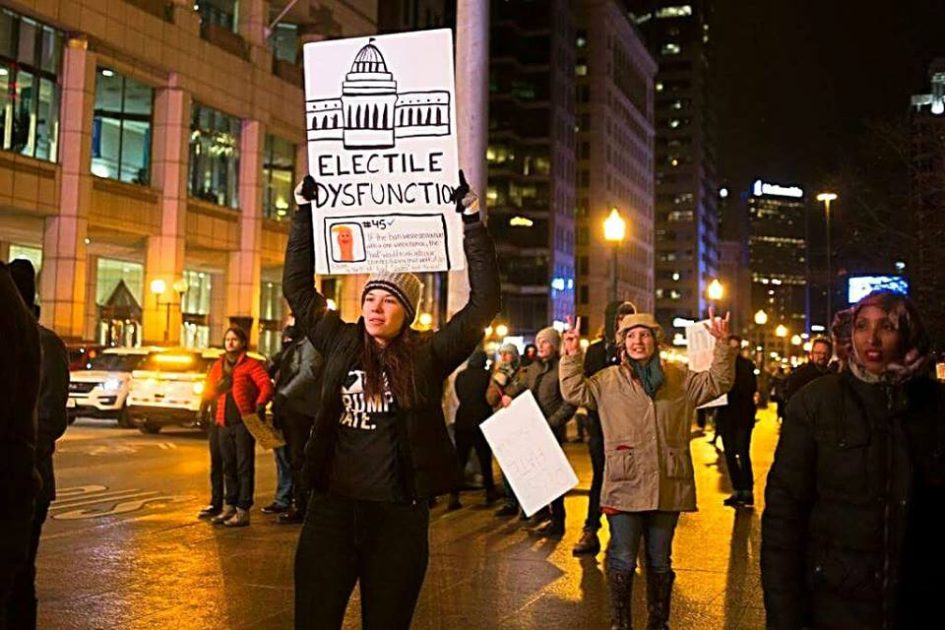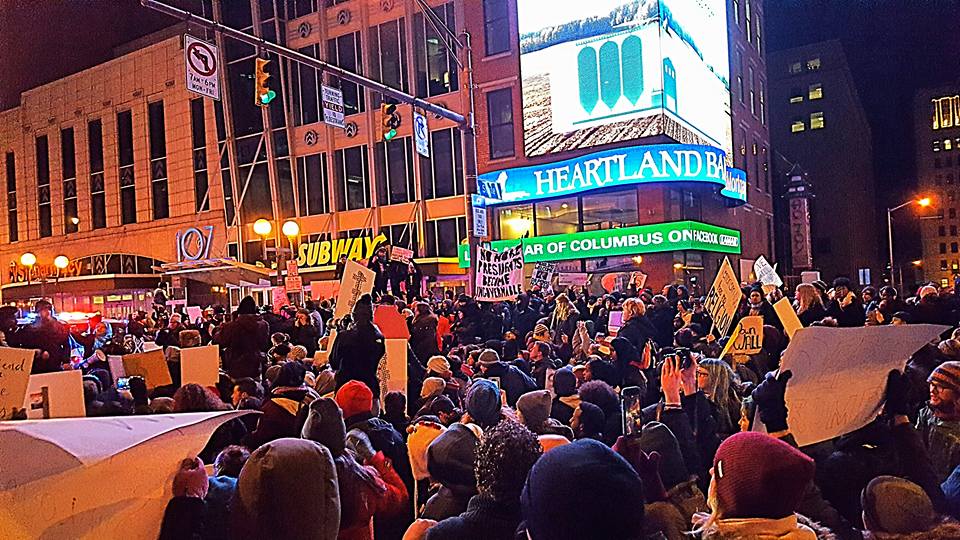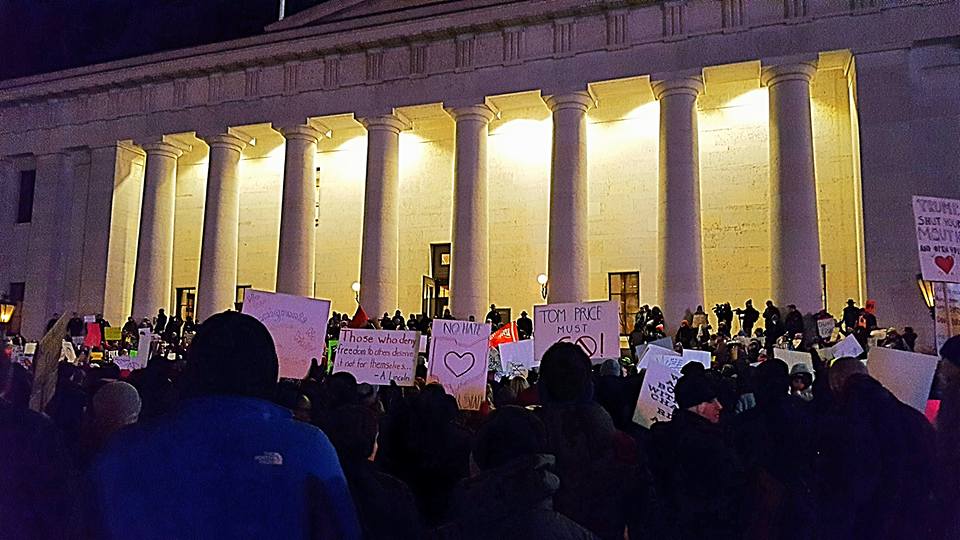Protesters took to the streets of downtown Columbus Monday evening to speak out against President Donald Trump’s recent executive order, which bans refugees, migrants and foreign nationals from seven mostly Muslim countries from entering the United States. Several Capital students were among the protesters.
“There were about 3,000 people there of all races and ages,” Brittany Daughenbaugh, a junior biology pre-med major, said. “[The speakers] focused on issues such as the Muslim ban, women’s rights and the wall.”
Shouting chants such as “no hate, no fear, refugees are welcome here,” the protesters marched from the Ohio Statehouse to the Franklin County Municipal Court and back to intersection of High Street and State Street, where they began to block traffic.
“People held up signs throughout, which addressed lots of different issues, from reproductive rights to the rise of white supremacy and fascism, as well as those standing in solidarity with refugees,” Gabby Muetzel, senior electronic media and film major, said. “Most memorably, a woman held up a sign to her [passing car] window that simply read, ‘Thank you.’”

After several minutes of the crowd impeding traffic, the Columbus Division of Police (CPD) dispersed them using pepper spray.
“We saw that the police were wearing gas masks, but we just thought it was to scare us,” Jackie Richardson, first-year art education major, said. “Suddenly without warning I saw pepper spray shoot above us.
“My friend immediately began screaming, and she could not see. I grabbed her, and we started running away. Some strangers offered her water and they started pouring it on her eyes … I made the mistake of rubbing my eyes, which made it much worse … I tried to ask a police officer for help, but she said, ‘Go away, I can’t help you.’”
According to several protesters, the police issued repeated warnings to move from the street before using the tear gas.
“When the CPD put on their masks, the more experienced protesters went around explaining what to do if they started using pepper spray,” Muetzel said. “Remove your contacts, cup your eyes with your palms, cover your mouths and nose, don’t rub your face, and head towards the medics.”
While the protesters reportedly remained peaceful, their blocking of an in-use public street was illegal.

“When we got back to Cap, we went to [One Main Cafe] to buy milk for our eyes,” Richardson said. “We were very disappointed at the police for using so much unnecessary force, but we were very encouraged by the kindness of the many people who helped us so selflessly … If anything good comes from this presidency, [it] is that Trump has united us all in a way I don’t think anyone expected.”
With a growing number of demonstrations in American cities following the election of Trump, some Republican controlled state legislatures have introduced bills to further criminalize the blocking of public streets by protesters.
In South Dakota, motorists who run down protesters on public streets could be exempt from prosecution, even if someone is injured or killed, as long as the motorist did not purposely hit the victim.
And in Iowa, blocking traffic on a highway could be a felony punishable by up to five years in prison.
Proponents of such bills argue that they are necessary to allow emergency services unrestricted access to roadways, while opponents see them as thinly-veiled attempts to restrict free speech and political dissent.

